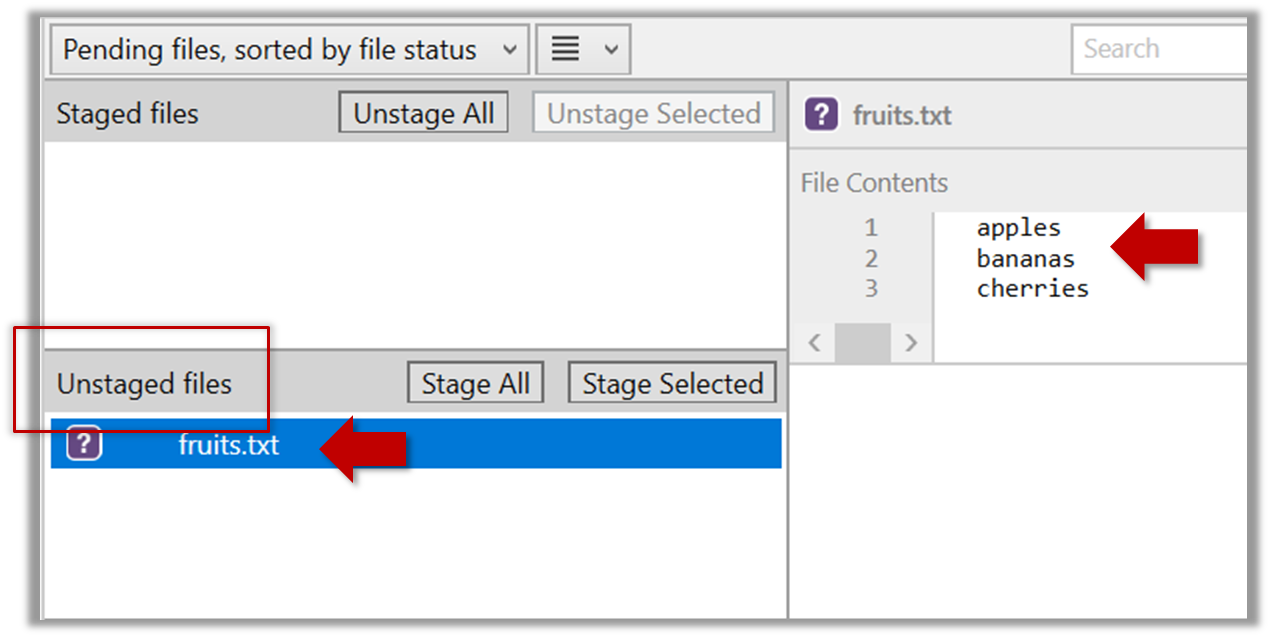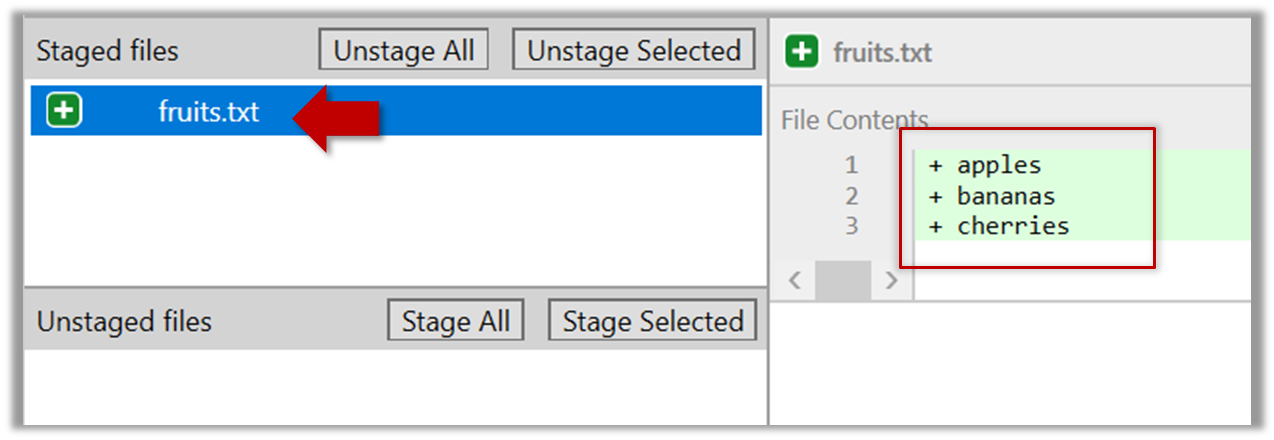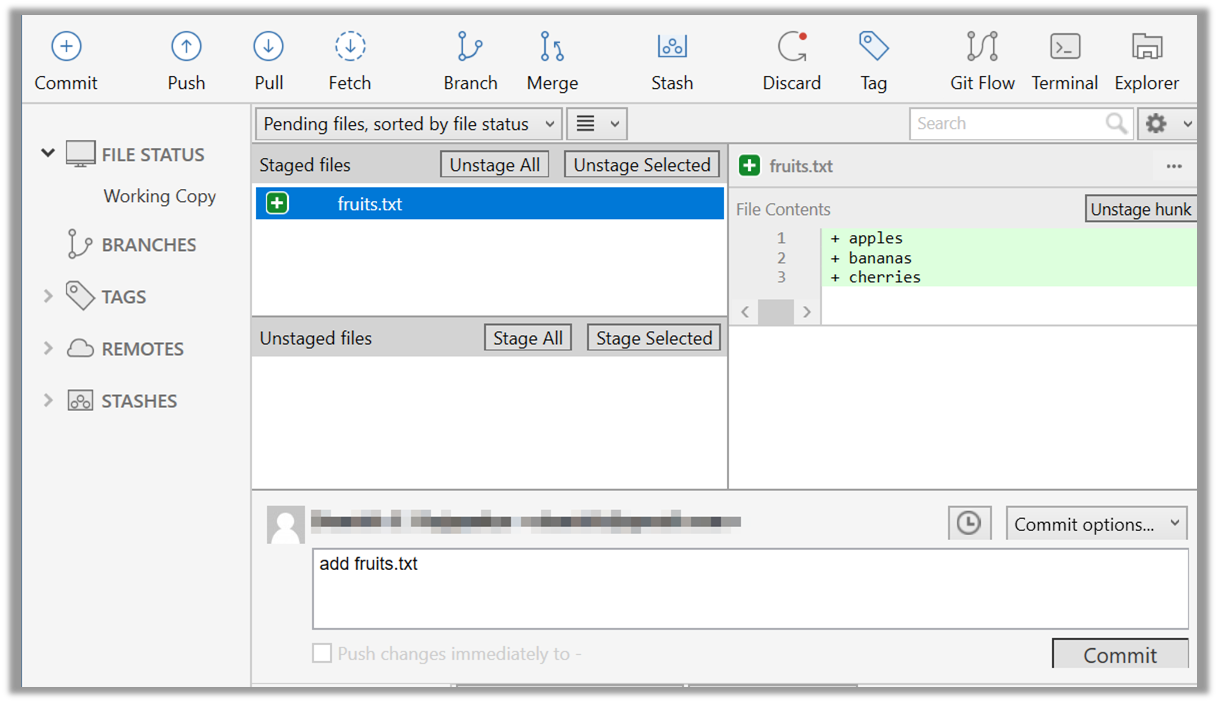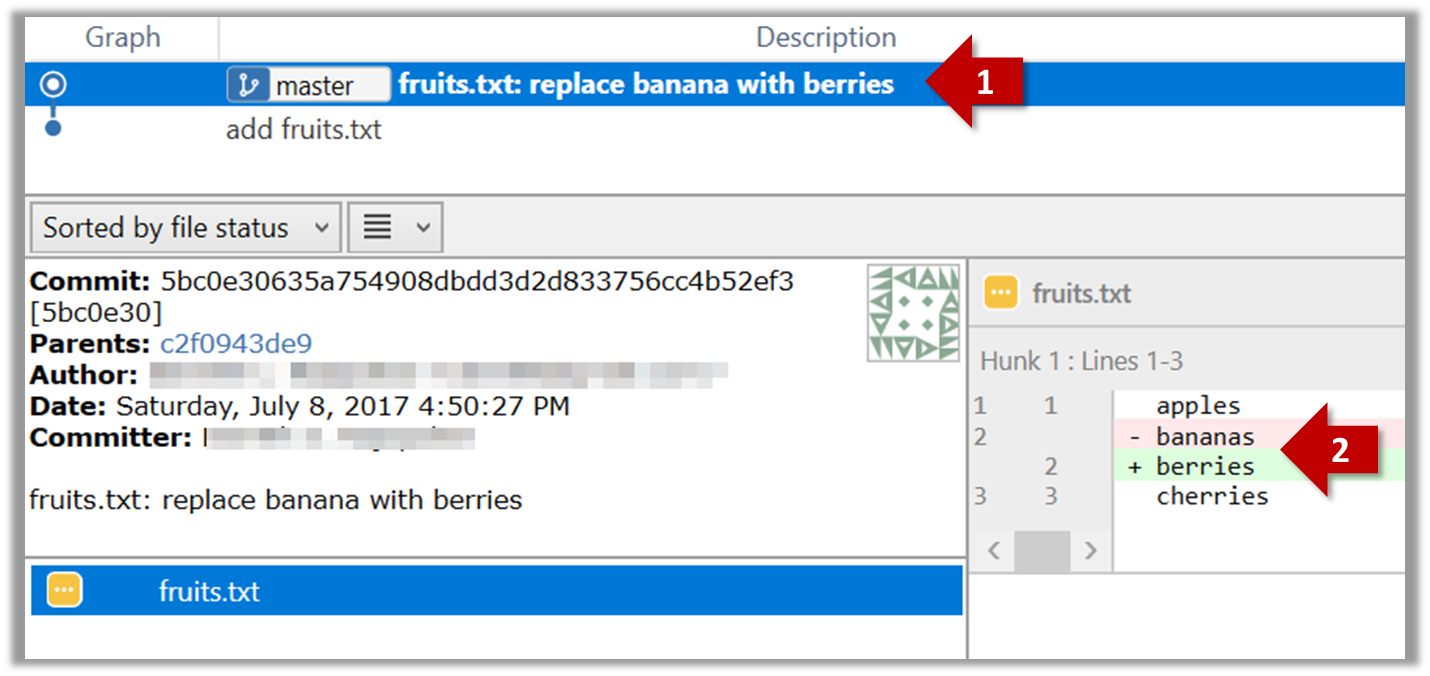After initializing a repository, Git can help you with revision controlling files inside the working directory. However, it is not automatic. It is up to you to tell Git which of your changes (aka revisions) should be committed to its memory for later use. Saving changes into Git's memory in that way is often called committing and a change saved to the revision history is called a commit.
Working directory: the root directory revision-controlled by Git (e.g., the directory in which the repo was initialized).
Commit (noun): a change (aka a revision) saved in the Git revision history.
(verb): the act of creating a commit i.e., saving a change in the working directory into the Git revision history.
Here are the steps you can follow to learn how to work with Git commits:
1. Do some changes to the content inside the working directory e.g., create a file named fruits.txt in the things directory and add some dummy text to it.
2. Observe how the file is detected by Git.
The file is shown as ‘unstaged’.

You can use the git status command to check the status of the working directory.
git status
# On branch master
#
# Initial commit
#
# Untracked files:
# (use "git add <file>..." to include in what will be committed)
#
# a.txt
nothing added to commit but untracked files present (use "git add" to track)
3. Stage the changes to commit: Although Git has detected the file in the working directory, it will not do anything with the file unless you tell it to. Suppose you want to commit the current changes to the file. First, you should stage the file.
Stage (verb): Instructing Git to prepare a file for committing.
Select the fruits.txt and click on the Stage Selected button.

fruits.txt should appear in the Staged files panel now.

You can use the stage or the add command (they are synonyms, add is the more popular choice) to stage files.
git add fruits.txt
git status
# On branch master
#
# Initial commit
#
# Changes to be committed:
# (use "git rm --cached <file>..." to unstage)
#
# new file: fruits.txt
#
4. Commit the staged version of fruits.txt.
Click the Commit button, enter a commit message e.g. add fruits.txt into the text box, and click Commit.

Use the commit command to commit. The -m switch is used to specify the commit message.
git commit -m "Add fruits.txt"
You can use the log command to see the commit history.
git log
commit 8fd30a6910efb28bb258cd01be93e481caeab846
Author: … < … @... >
Date: Wed Jul 5 16:06:28 2017 +0800
Add fruits.txt
Note the existence of something called the master branch. Git allows you to have multiple branches (i.e. it is a way to evolve the content in parallel) and Git auto-creates a branch named master on which the commits go on by default.
5. Do a few more commits.
Make some changes to
fruits.txt(e.g. add some text and delete some text). Stage the changes, and commit the changes using the same steps you followed before. You should end up with something like this.
Next, add two more files
colors.txtandshapes.txtto the same working directory. Add a third commit to record the current state of the working directory.
6. See the revision graph: Note how commits form a path-like structure aka the revision tree/graph. In the revision graph, each commit is shown as linked to its 'parent' commit (i.e., the commit before it).
To see the revision graph, click on the History item on the menu on the right edge of SourceTree.
The gitk command opens a rudimentary graphical view of the revision graph.